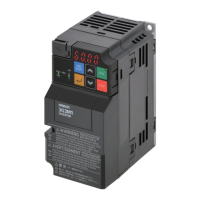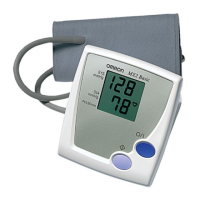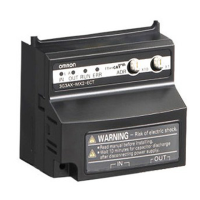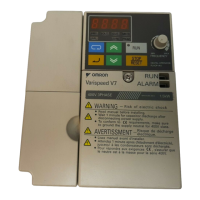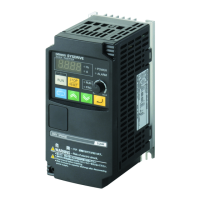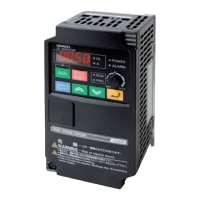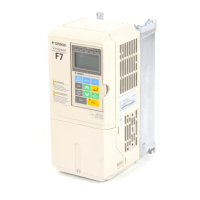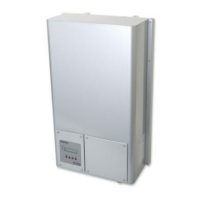213
Using Intelligent Output Terminals Section 4-6
4-6-19 Analog Input Disconnect Detect
This feature is useful when the inverter receives a speed reference from an
external device. Upon input signal loss at either the [O] or [OI] terminal, the
inverter normally just decelerates the motor to a stop. However, the inverter
can use the intelligent output terminal [Dc] to signal other devices that a signal
loss has occurred.
Voltage signal loss at [O] terminal – Parameter
B082 is the Start Frequency
Adjustment. It sets the beginning (minimum) output frequency when the
speed reference source is greater than zero. If the analog input at terminal [O]
is less than the Start Frequency, the inverter turns ON the [Dc] output to indi-
cate a signal loss condition.
Current signal loss at [OI] terminal – The [OI] terminal accepts a 4 mA to
20 mA signal, with 4 mA representing the beginning of the input range. If the
input current falls below 4 mA, the inverter applies a threshold to detect signal
loss.
Note that a signal loss is not an inverter trip event. When the analog input
value is again above the
B082 value, the [Dc] output turns OFF. There is no
error condition to clear.
Option
Code
Terminal
Symbol
Function
Name
State Description
27 ODc Analog volt-
age Input
Disconnect
Detect
ON when signal loss is detected on [O]
input
OFF when no signal loss is detected on
[O] input
28 OIDc Analog
current Input
Disconnect
Detect
ON when signal loss is detected on [OI]
input
OFF when no signal loss is detected on
[OI] input
Valid for inputs: 11, 12, AL0 - AL2
Required settings: A001=01, B082
Notes:
• The [Dc] output can indicate an analog signal disconnect when the inverter is in
Stop Mode, as well as Run Mode.
• The example circuit for terminal [11] drives a relay coil. Note the use of a diode to
prevent the negative-going turn-off spike generated by the coil from damaging the
inverter's output transistor.
